The Most Beautiful Wreck Dives in the Bay of Saint-Malo
It is possible to dive on numerous wrecks in the Bay of Saint-Malo. Indeed, this corsair city is oriented towards the sea and has been the scene of many maritime battles throughout the ages. In the 17th century, Saint-Malo was a haven for corsairs in the service of the King of France, attacking English ships to plunder their precious cargo. Despite numerous English attacks, Saint-Malo was never captured. Later, in the 20th century, World War II saw naval clashes off the coast of Saint-Malo. Due to its history, complex navigation due to its many reefs, and Europe’s largest tidal range, many ships now lie in the depths of this bay. Not all wrecks are accessible to recreational divers, and some have limited interest due to their condition. However, there are some that are worth exploring. We will introduce you to the most beautiful ones.
Diving on the Hilda: The Tragedy in 1905
It was a steamship operated by the South Western Company, dedicated to trans-channel passenger transport. The Hilda was built in Glasgow in 1882, measuring approximately 71 meters long and 8.59 meters wide. Powered by a single propeller driven by a two-cylinder engine, it could reach a speed of 13 knots. Its steel hull made it robust to face rough seas. During its career, the Hilda’s boilers were replaced three times, and electricity was installed on board, allowing the ship to navigate in all weather conditions. For eleven years, it proudly served in transporting passengers across the English Channel.
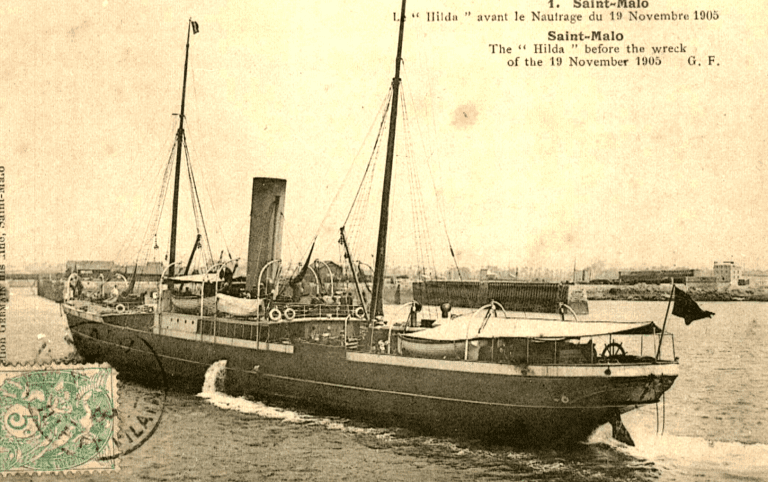
The sinking of the Hilda remains etched in the maritime history of Saint-Malo as one of the greatest sea tragedies. On November 19, 1905, among the 131 occupants of the ship, only 6 survived to testify to this tragedy.
The seasoned captain of the South Western Company was familiar with the area and the ship. Arriving off the coast of Saint-Malo at nightfall, the weather was freezing, snow was falling, and the sea was raging. After hours of waiting off the city, finally seeing the lights of Saint-Malo, the captain likely made the difficult decision to navigate without visibility through the dangerous channels to enter the harbor. The exact details remain unknown, but the Hilda, heading towards the port, struck the rocky outcrops known as the Courtis. From that moment, the situation rapidly deteriorated, with the storm and icy waters engulfing the Hilda and its passengers.
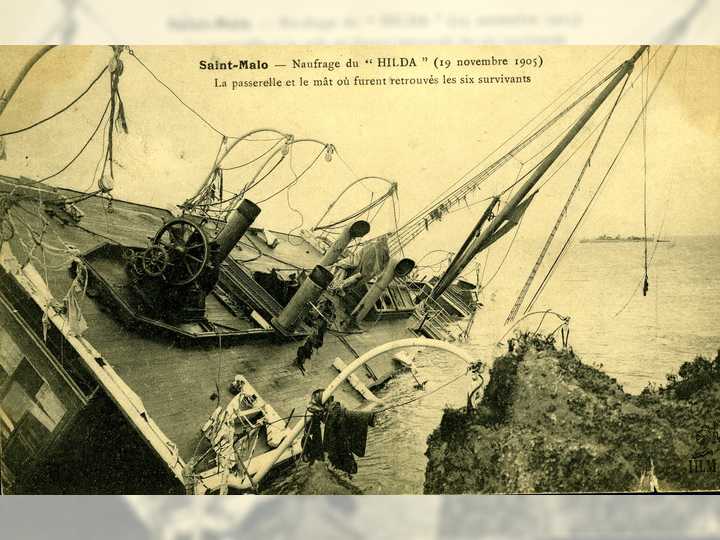
Today, there is not much left of the wreckage of the Hilda. Exposed to storms for over a century, this wreck is completely fragmented. The remaining elements are limited to the boilers, a pile of machinery debris, and the propeller shaft. The propeller itself was removed in the 90s by the Dinard diving club and offered to the city to commemorate this maritime tragedy.
Diving at the wreck site itself poses no major difficulty. The seabed is between 25 and 15 meters deep. However, due to the scattered debris, it can sometimes be a bit challenging to navigate.
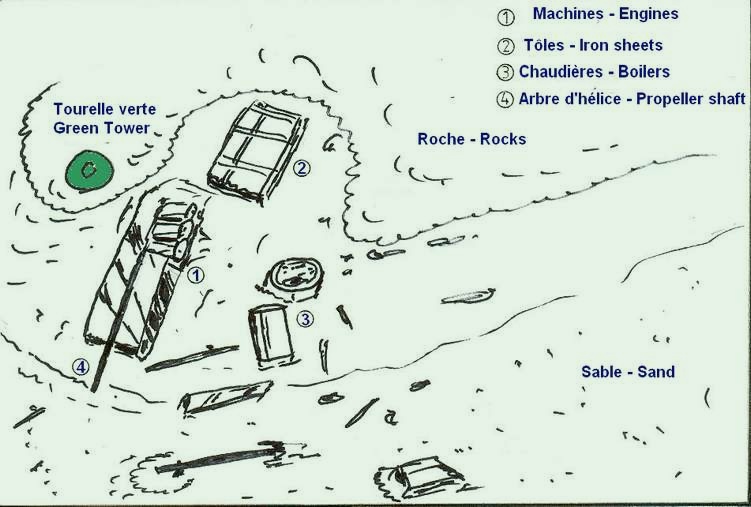
Diving on the Fetlar: A Sunny Day Shipwreck from 1919
The Fetlar, built in Glasgow in 1898 by Barclay & Curle, was initially named Ape before being acquired by Aberdeen. Its steel hull was divided into 6 watertight compartments, a feature that made it robust and safe for sea voyages.
The Fetlar was powered by a steam engine, operated by a boiler. With a length of approximately 55 meters and a width of 8.6 meters, it was designed for the transport of goods, playing a crucial role in the trans-channel trade logistics of that time.
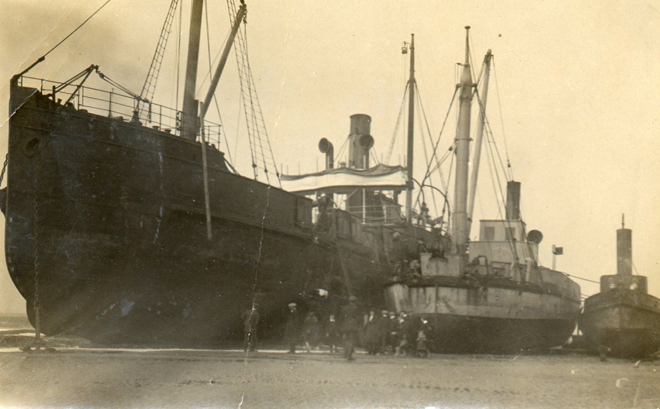
The Fetlar, a vessel from Southampton, was loaded with various goods, including flour, crucibles, and shoes destined for the French coasts.
This sunny Sunday offered ideal weather conditions for navigation, with calm seas and clear skies. The Fetlar had passed the Jardin lighthouse and was sailing towards its destination port. However, upon passing the lighthouse, the ship ran aground on the well-known rocky outcrop called Bunel, a mistake that could have been avoided.
The captain hoped to reach the port by using the on-board bilge pumps to drain the infiltrating water. However, the water ingress proved to be too significant, forcing the captain to make the decision to shut down the boiler to prevent it from exploding upon contact with water and to order the evacuation of the crew.
Meanwhile, the ship Marie Catherine came to the rescue of the Fetlar. However, in a twist of fate, the Marie Catherine also ran aground on the rocks of Petite Conchée.
Thus, on this beautiful sunny day, the people of Saint-Malo witnessed two crews from different ships arriving on lifeboats.
Today, the Fetlar is undoubtedly one of the best-preserved and most impressive wrecks in the Bay of Saint-Malo. Despite the marks of time, the Fetlar continues to attract divers from the region and beyond.
Diving around the Fetlar is relatively straightforward, with a seabed at around 18 meters at low tide. To access the wreck, you simply enter the water using one of the two buoys located port or starboard of the wreck. From there, you follow the artificial reefs laid by the Dinard marine station to reach the wreck, greatly facilitating underwater navigation.
Once you reach the wreck, you’ll be impressed by its imposing size. To start, you can circumnavigate the outside of the wreck, providing a unique view into the forehold through the hull. Over time, the steel plates that once composed the hull have gradually fallen, now offering the opportunity to observe the forehold from the outside.
Continuing your exploration towards the stern of the ship, you’ll discover the propeller and rudder, which are still in place. From this point, you can ascend to the top of the wreck and explore the bow of the ship.
Please note that access to the holds of the wreck is now prohibited, especially at the front, as the floor is collapsing. However, it is still possible to observe the inside of the wreck through openings on the deck without entering the holds. You might even attempt to traverse from the forehold to the afterhold through the engine room, but be aware that the passage is extremely narrow.
A touch of history lies in the remnants of the Fetlar’s cargo: shoe soles that can still be found in the holds, reminiscent of the goods it once transported. This dive around the Fetlar offers an unforgettable experience for divers curious to uncover the submerged past of the Bay of Saint-Malo.
Diving on the RO 21: The Sinking of a Cargo Ship in 1943
Serving under German occupation, the RO 21 was a cargo ship tasked with transporting materials for the construction of bunkers on the Channel Islands.
On February 20, 1943, the RO 21, carrying a cargo of cement, steel beams, and tiles, departs from the port of Saint-Malo bound for Jersey, accompanied by several escort vessels. The captain of the RO 21 informs the German flotilla leader that his ship cannot take the planned route as it poses a risk of encountering rocks. However, the German commander refuses to change course.
Unfortunately, the RO 21 collides head-on with the Coutils rocks. Fortunately, there are no reported casualties, but the front of the ship is stranded on the rocks, while only the rear portion remains submerged.
Diving on the RO 21 wreck is an accessible exploration, located at a depth of around 20 meters. This dive does not pose significant challenges, providing divers with an immersion into history. However, the wreck has suffered damage over time and storms.
The stern of the ship is the best-preserved part. During your dive, you can observe mooring bollards, balcony elements, and even bags of cement, remnants of the cargo. As you ascend towards the bow, underwater flora gradually intertwines with the structure. The boundary between the wreck and the surrounding rocks becomes increasingly blurred.
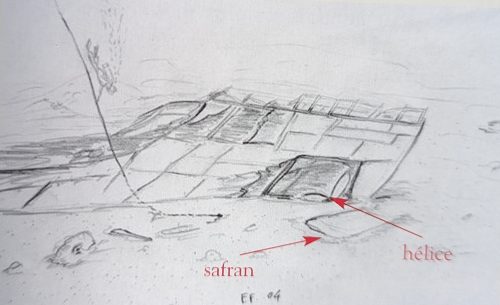
Diving on the Walter Darré & Hinrich Hey - Shipwreck in July 1944
The summer of 1944 was marked by the complete isolation of the Channel Islands by the Allies, who intercepted all German convoys. Deprived of supplies and equipment, the German army decided to evacuate the prisoners who were working on fortifications.
In this context, in July 1944, the Minotaure was tasked with repatriating 500 prisoners from Jersey to Saint-Malo. This ship was escorted by three patrol boats: the Walter Darré, the Hinrich Hey, and the M4622.
Quickly, this convoy was spotted by the Allies. They focused on the lead ship, mistakenly thinking it was a large cargo vessel. The Walter Darré and the Hinrich Hey were swiftly sunk, while the Minotaure remained afloat, although it was hit by torpedoes. This resulted in significant losses and injuries among the passengers.
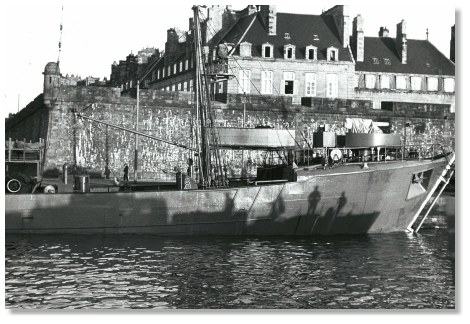
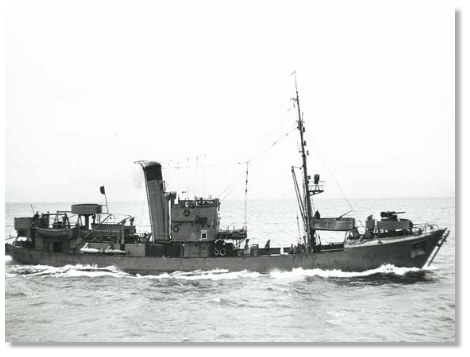
Diving on the Walter Darré Wreck
The Walter Darré rests on a sandy bottom at a depth of about 35 meters at low tide. The wreck is lying on its starboard side and severed in two at the level of the boiler. The front part of the wreck is well-preserved, and it’s possible to explore the holds quite easily. On the sand, an 88mm cannon can be observed, and the anchors are still in place.
The rear part of the wreck is not aligned with the front section. Here, you’ll find the recognizable boiler. As you progress towards the stern of the ship, more scattered debris comes into view.
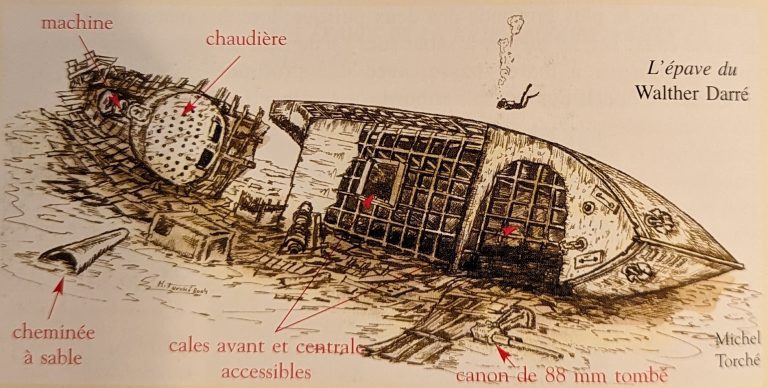
Diving on the Hinrich Hey Wreck
Located just next to the Walter Darré, the Hinrich Hey is also severed into two parts. However, the debris at the rear of the wreck is scattered over several hundred meters, making navigation challenging for those who venture there.
In the front section, it is possible to explore the holds, and on the deck, an 88mm cannon was still in place (although it seems to have fallen a few years ago). The rear part is not aligned with the front of the wreck, and you can observe the propeller along with a multitude of scattered debris.
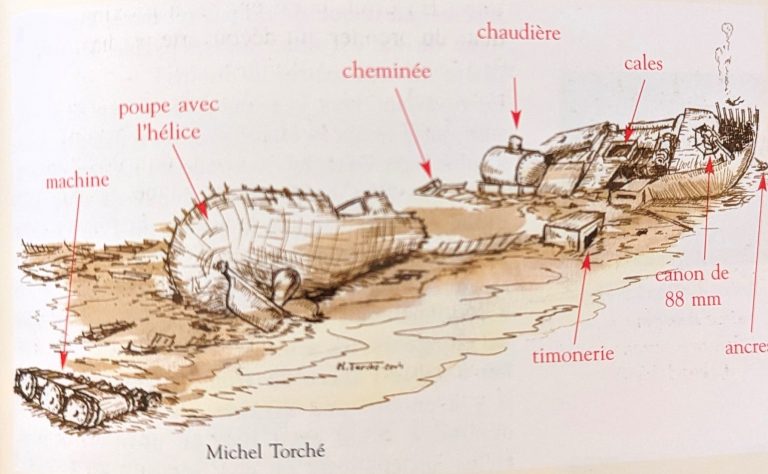
Diving on La Place: Shipwreck off Cap Fréhel in 1950
La Place was a meteorological frigate acquired from the Americans in the aftermath of World War II. Measuring 92.5 meters long and 3.45 meters wide, it sailed from the Finistère coast towards the port of Saint-Malo. On the night of September 16, 1950, the captain decided to anchor at La Frenaye, near Cap Fréhel, for shelter and in calm weather.
However, in the evening, an explosion severed the ship in two. Within about ten minutes, the vessel was on the verge of being engulfed. Of the 92 men on board, only 41 survived. It appears that La Place, like many other boats before it, struck a magnetic mine left by the Germans. The area where La Place was anchored that night had not yet been cleared of mines.
Exploring the wreck of La Place, located at approximately fifteen meters depth, offers a fascinating feature: the ship has completely overturned. As you explore this wreck, you can observe the propellers and rudders at the stern. Moving up along the ship, a large breach separates it in two, providing a unique perspective of this former meteorological vessel. However, it’s important to note that dives on La Place may sometimes be prohibited due to potential hydrocarbon leaks.
The sources and to delve deeper
We highly recommend reading the book ‘Les Fabuleux Trésors Engloutis de la Baie de Saint-Malo’ by Emmanuel FEIGE. This captivating work traces the history of shipwrecks in the corsair city since the 17th century, providing a fascinating insight into this maritime heritage.
Furthermore, the book offers a detailed description of dives on the magnificent wrecks in the region. We want to express our sincere gratitude to Emmanuel FEIGE for sharing this valuable knowledge, allowing us to explore and better appreciate the underwater treasures of the Bay of Saint-Malo.

